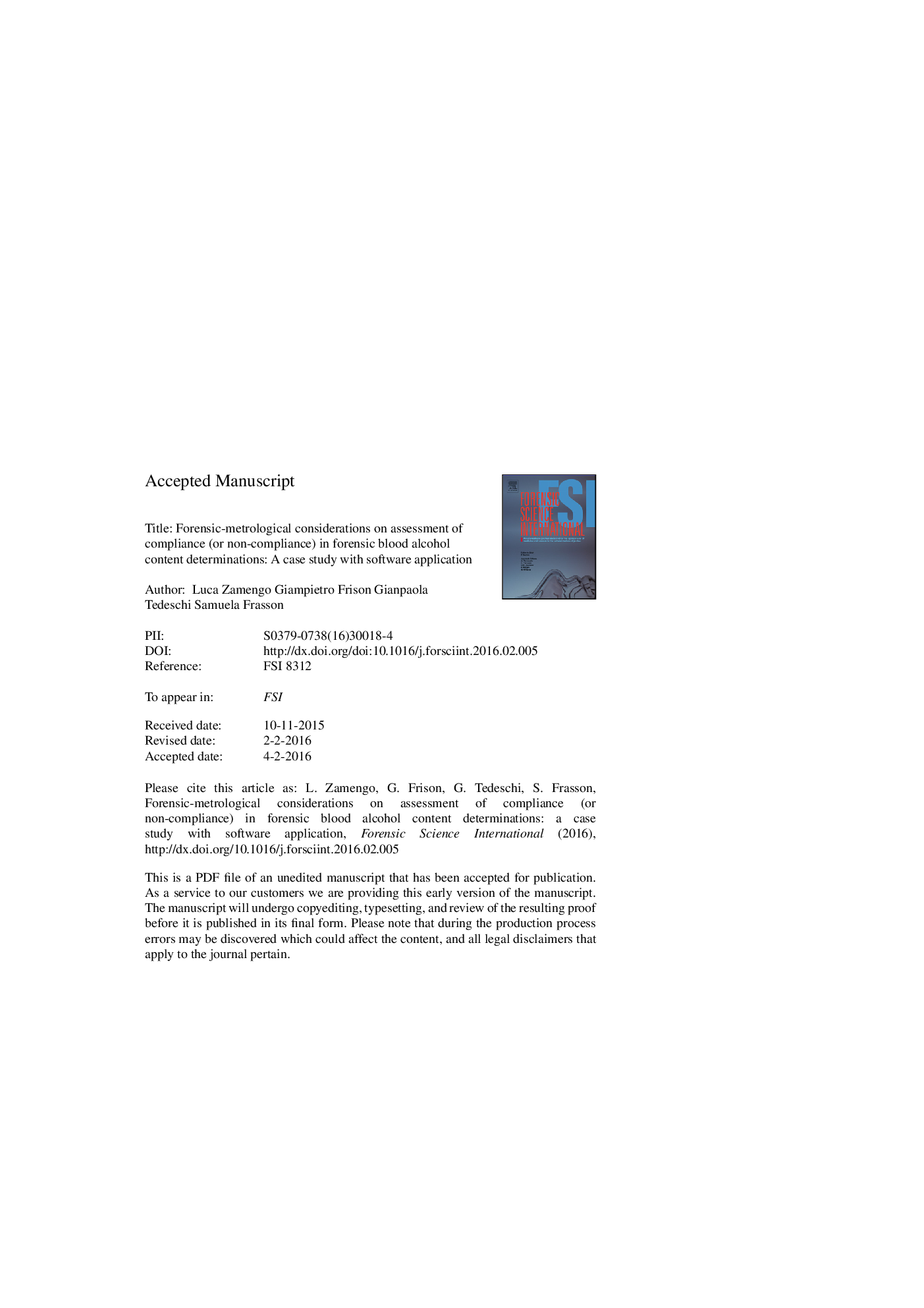| Article ID | Journal | Published Year | Pages | File Type |
|---|---|---|---|---|
| 6551774 | Forensic Science International | 2016 | 26 Pages |
Abstract
Blood alcohol concentration is the most frequent analytical determination carried out in forensic toxicology laboratories worldwide. It is usually required to assess if an offence has been committed by comparing blood alcohol levels with specified legal limits, which can vary widely among countries. Due to possible serious legal consequences associated with non-compliant alcohol levels, measurement uncertainty should be carefully evaluated, along with other metrological aspects which can influence the final result. The whole procedure can be time-consuming and error-generating in routine practice, increasing the risks for unreliable assessments. A software application named Ethanol WorkBook (EtWB) was developed at the author's laboratory by using Visual Basic for Application language and MS Excel®, with the aim of providing help to forensic analysts involved in blood alcohol determinations. The program can (i) calculate measurement uncertainties and decision limits with different methodologies; (ii) assess compliance to specification limits with a guard-band approach; (iii) manage quality control (QC) data and create control charts for QC samples; (iv) create control maps from real cases data archives; (v) provide laboratory reports with graphical outputs for elaborated data and (vi) create comprehensive searchable case archives. A typical example of drink driving case is presented and discussed to illustrate the importance of a metrological approach for reliable compliance assessment and to demonstrate software application in routine practice. The tool is made freely available to the scientific community at request.
Related Topics
Physical Sciences and Engineering
Chemistry
Analytical Chemistry
Authors
Luca Zamengo, Giampietro Frison, Gianpaola Tedeschi, Samuela Frasson,
